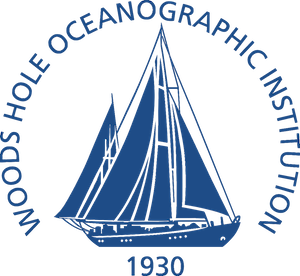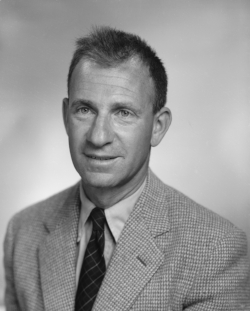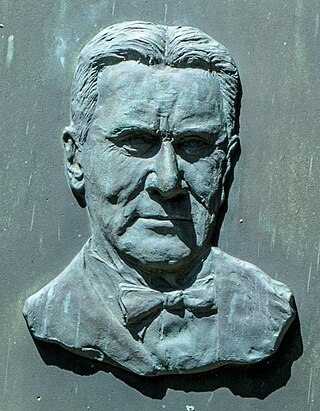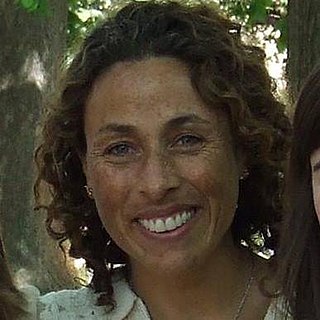Related Research Articles

The Woods Hole Oceanographic Institution is a private, nonprofit research and higher education facility dedicated to the study of marine science and engineering.

Alvin (DSV-2) is a crewed deep-ocean research submersible owned by the United States Navy and operated by the Woods Hole Oceanographic Institution (WHOI) in Woods Hole, Massachusetts. The vehicle was built by General Mills' Electronics Group in Minneapolis, Minnesota. Named to honor the prime mover and creative inspiration for the vehicle, Allyn Vine, Alvin was commissioned on June 5, 1964. The submersible is launched from the deep submergence support vessel RV Atlantis (AGOR-25), which is also owned by the U.S. Navy and operated by WHOI. The submersible has made more than 5,000 dives, carrying two scientists and a pilot, to observe the lifeforms that must cope with super-pressures and move about in total darkness, as well as exploring the wreck of Titanic. Research conducted by Alvin has been featured in nearly 2,000 scientific papers.

A nuclear and radiation accident is defined by the International Atomic Energy Agency (IAEA) as "an event that has led to significant consequences to people, the environment or the facility. Examples include lethal effects to individuals, large radioactivity release to the environment, reactor core melt." The prime example of a "major nuclear accident" is one in which a reactor core is damaged and significant amounts of radioactive isotopes are released, such as in the Chernobyl disaster in 1986 and Fukushima nuclear disaster in 2011.

Walter Heinrich Munk was an American physical oceanographer. He was one of the first scientists to bring statistical methods to the analysis of oceanographic data. Munk worked on a wide range of topics, including surface waves, geophysical implications of variations in the Earth's rotation, tides, internal waves, deep-ocean drilling into the sea floor, acoustical measurements of ocean properties, sea level rise, and climate change. His work won awards including the National Medal of Science, the Kyoto Prize, and induction to the French Legion of Honour.

Henry Melson Stommel was a major contributor to the field of physical oceanography. Beginning in the 1940s, he advanced theories about global ocean circulation patterns and the behavior of the Gulf Stream that form the basis of physical oceanography today. Widely recognized as one of the most influential and productive oceanographers of his time, Stommel was both a groundbreaking theoretician and an astute, seagoing observer.

Alfred Clarence Redfield was an American oceanographer known for having discovered the Redfield ratio, which describes the ratio between nutrients in plankton and ocean water. He was a professor of physiology at Harvard University and one of the original staff of the Woods Hole Oceanographic Institution upon its founding in 1930.
William B. Curry is an American oceanographer who is the president and CEO of the Bermuda Institute of Ocean Studies (BIOS). He is known for studying historical climate and ocean circulation. Curry holds a Bachelor of Science in geology from the University of Delaware (1974) and a PhD in geology from Brown University (1980).
Lynne Talley is a physical oceanographer at Scripps Institution of Oceanography known for her research into the large-scale circulation of water masses in the global ocean.
John Crossley Swallow FRS was an English oceanographer who invented the Swallow float, a scientific drifting bottle based on the messages in bottles that shipwrecked sailors hoped would reach inhabited shores, summoning assistance.

The Fukushima nuclear accident was a major nuclear accident at the Fukushima Daiichi nuclear power plant in Ōkuma, Fukushima, Japan which began on March 11, 2011. The proximate cause of the accident was the 2011 Tōhoku earthquake and tsunami, which resulted in electrical grid failure and damaged nearly all of the power plant's backup energy sources. The subsequent inability to sufficiently cool reactors after shutdown compromised containment and resulted in the release of radioactive contaminants into the surrounding environment. The accident was rated seven on the INES by NISA, following a report by the JNES.

The radiation effects from the Fukushima Daiichi nuclear disaster are the observed and predicted effects as a result of the release of radioactive isotopes from the Fukushima Daiichii Nuclear Power Plant following the 2011 Tōhoku 9.0 magnitude earthquake and tsunami. The release of radioactive isotopes from reactor containment vessels was a result of venting in order to reduce gaseous pressure, and the discharge of coolant water into the sea. This resulted in Japanese authorities implementing a 30-km exclusion zone around the power plant and the continued displacement of approximately 156,000 people as of early 2013. The number of evacuees has declined to 49,492 as of March 2018. Radioactive particles from the incident, including iodine-131 and caesium-134/137, have since been detected at atomospheric radionuclide sampling stations around the world, including in California and the Pacific Ocean.

Joseph Pedlosky is an American physical oceanographer. He is a scientist emeritus at the Woods Hole Oceanographic Institution. Pedlosky was elected to the United States National Academy of Sciences in 1985. He is the author of the textbooks Geophysical Fluid Dynamics, Ocean Circulation Theory, and Waves in the Ocean and Atmosphere: Introduction to Wave Dynamics.

The Fukushima Daiichi nuclear accident genshiryoku hatsudensho jiko) was a series of equipment failures, nuclear meltdowns, and releases of radioactive materials at the Fukushima I Nuclear Power Plant, following the Tōhoku earthquake and tsunami on 11 March 2011. It was the largest nuclear disaster since the Chernobyl disaster of 1986, and the radiation released exceeded official safety guidelines. Despite this, there were no deaths caused by acute radiation syndrome. Given the uncertain health effects of low-dose radiation, cancer deaths cannot be ruled out. However, studies by the World Health Organization and Tokyo University have shown that no discernible increase in the rate of cancer deaths is expected. Predicted future cancer deaths due to accumulated radiation exposures in the population living near Fukushima have ranged in the academic literature from none to hundreds.
John Hyslop Steele was a British oceanographer who made major contributions to the study of marine ecosystems.

Claudia Benitez-Nelson is a Latinx American oceanographer whose research focuses on marine geochemistry and biogeochemistry. A Carolina Distinguished Professor, she serves as the Senior Associate Dean for College Initiatives and Interdisciplinary Programs at the University of South Carolina’s College of Arts and Sciences.
Bess Ward is an American oceanographer, biogeochemist, microbiologist, and William J. Sinclair Professor of Geosciences at Princeton University.
Caroline C. Ummenhofer is a physical oceanographer at the Woods Hole Oceanographic Institution where she studies extreme weather events with a particular focus on the Indian Ocean. Ummenhofer makes an effort to connect her discoveries about predicting extreme weather events and precipitation to helping the nations affected.
Kenneth Orris Emery (1914–1998) was a Canadian-born American marine geologist.

Radioactive water from the Fukushima Daiichi Nuclear Power Plant in Japan began being discharged into the Pacific Ocean on 11 March 2011, following the Fukushima Daiichi nuclear disaster triggered by the Tōhoku earthquake and tsunami. Three of the plant's reactors experienced meltdowns, leaving behind melted fuel debris. Water was introduced to prevent the meltdowns from progressing further. When cooling water, groundwater, and rain came into contact with the melted fuel debris, they became contaminated with radioactive nuclides, such as iodine-131, caesium-134, caesium-137, and strontium-90.
Richard W. Murray, a geologist and oceanographer, is the Deputy Director and Vice President for Research at Woods Hole Oceanographic Institution (WHOI) in Woods Hole, Massachusetts. Murray was previously a professor of earth and environment at Boston University (1992-2019), where he served as Chair of the Department of Earth Sciences (2000-2005), and Director of Boston University's Marine Program (2006-2009).
References
- ↑ "Royal Academy selects fifteen new members". Royal Netherlands Academy of Arts and Sciences. 23 May 2013. Archived from the original on 29 September 2020.
- ↑ "Ken Buesseler". Woods Hole Oceanographic Institution. Retrieved 17 May 2016.
- ↑ "Kenneth Buesseler CV" (PDF). Woods Hole Oceanographic Institution. April 2015. Retrieved 17 May 2016.
- ↑ Daniel Cressey (20 January 2014). "Cash wanted to help monitor Fukushima ocean radioactivity". Nature . doi:10.1038/nature.2014.14552. S2CID 131450159 . Retrieved 17 May 2016.
- ↑ Mihai Andrei (8 March 2016). "Ken Buesseler, oceanographer, answers questions about Fukushima's impact on the oceans". ZME Science. Retrieved 17 May 2016.
- ↑ "Fukushima site still leaking after five years, research shows". Phys.org . 8 March 2016. Retrieved 17 May 2016.
- ↑ Ken Buesseler (9 March 2016). "5 years later, Fukushima radiation continues to seep into the Pacific Ocean". PBS NewsHour. Retrieved 17 May 2016.
- ↑ Ken_Buesseler; r/Science (8 March 2016). "Science AMA Series: I'm Ken Buesseler, an oceanographer who has been studying the impacts of Fukushima Dai-ichi on the oceans. It's been 5 years now and I'm still being asked – how radioactive is our ocean? and should I be concerned? AMA". The Winnower. doi: 10.15200/winn.145735.52993 . Retrieved 17 May 2016.
- ↑ "Fellows of 2009". American Geophysical Union. Retrieved 17 May 2016.
- ↑ "Kenneth Buesseler". Royal Netherlands Academy of Arts and Sciences. Archived from the original on 28 November 2020.
- ↑ Korte, Andrea (27 November 2018). "AAAS Honors Accomplished Scientists as 2018 Elected Fellows". American Association for the Advancement of Science. Archived from the original on 29 November 2020.
- ↑ "Top 30 Research Institutions in Oceanography". Times Higher Education. 5 May 2011. Archived from the original on 1 October 2017.